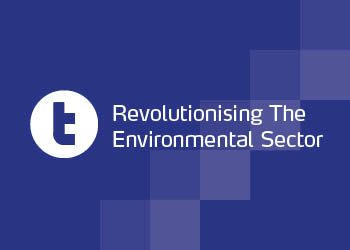In this article I look at the year in prices and how values compared in 2020 to other years using REB Market Intelligence data going back to 2013.
I investigate how 2020 compared to longer-term trends for paper grades including OCC, news & pam and mixed paper.
The same analysis is also carried out against PET bottles, HDPE bottles and LDPE 98/2 film.
Unsurprisingly, it is clear that 2020 has been a poor year for paper grades, although with OCC and mixed paper the year ended closer to longer-term average prices.
For the three plastic grades I look at, the clear pattern is that bottle grades have generally performed well over the last couple of years, although prices have returned closer towards long-term average values by the end of this year.
The picture is quite different with LDPE film where the first half of the year saw very high prices, but these had halved by the middle of the year and largely remained there.
With Covid and Brexit dominating this year, this year in prices shows that OCC, mixed, PET and HDPE bottles all ended the year close to their long-term averages. While news & pam is a declining market due to falling newspaper readership, the fall in LDPE values is more likely to be a result of less film being used due to retail lockdown closures.
If you take a basket of good approach where you take one tonne each of OCC, news & pam, mixed paper, PET bottles, HDPE bottles and LDPE film, the average price for all these is £1,227 since the beginning of 2013. But this year, it was just £1,091. A more detailed breakdown of average prices is below.
Paper and cardboard
This year started with OCC prices at just £28 per tonne, which was actually an improvement on £18 seen in December 2019 (this was also the lowest price recorded for OCC since REB Market Intelligence began producing prices at the start of 2013).
By 8 May, the REB Market Intelligence price reached a high of £125 as European lockdowns led to a surge in demand for brown.
After that point, a low was reached on 10 July when the price on this site hit £58. But since 14 . August when the price was £80 per tonne, OCC has remained in a range of £77 to £95. This high price was achieved on both 27 November and 4 December, according to the REB Market Intelligence weekly price report.
Overall, the average price for OCC was £68 this year.

While there was a brief period between 24 April and 22 May when the OCC price exceeded this average, from 24 July it never went below this year’s average again.
However, compared to the average price between 2013 and 2020, this was a poor year overall. The £68 average is significantly below the average of £89 seen since 2013.

One of the really fascinating points looking at the chart above is how volatile the OCC market has become since the middle to end of 2016. In the years prior to then, the price bubbled up and below the long-term average price, but since has risen and fallen sharply at various points.
Really interestingly, when you compare the average price for the volatile period between the whole years of 2017 and 2020 and the more stable period between 2013 to the end of 2016, there is little difference. The average price for the volatile period since the start of 2017 is £90 and for the period up to then £88.
Mixed paper followed a very similar pattern to OCC this year as can be seen in the chart below.
After starting 2020 with a gate fee price of -£3 it was mostly at -£5 per tonne until hitting £0 at the end of March. From that point, European lockdowns and the opening of new mills in Germany that wanted to source UK mixed, helped the price recover to £40 by 8 May.
Like OCC, the price slumped over the summer months dropping £8 per tonne by 3 July. The end of summer saw a recovery with mixed reaching £33 per tonne by 4 September.
By 27 November it had climbed to £50 per tonne, which was the highest price recorded this year, before finishing 2020 at £45 per tonne.

It is clear that the Chinese ban on imports of mixed paper had a fundamental impact on this market.
From the start of 2018 when China introduced the ban, the average price of mixed paper has been £27 per tonne, which is dramatically lower than the average price of £71 per tonne between 2013 and the end of 2017.
While the average price of mixed is £54 for the period 2013 until the end of 2020, it has only exceeded this average for a brief time since the Chinese ban. Between 7 September 2018 and 12 October 2019 the price of mixed was £55 and since then it has never been above the 2013 to 2020 average.

Prices for news & pam were generally more stable this year than OCC and mixed.
As can be seen in the chart below, this grade started the year stronger than the other grades at £50 per tonne. But it could not escape the Covid-induced slump in the spring with prices dropping as low as £15 per tonne by 27 March.
From 1 May, prices recovered back up to £50 per tonne and haven’t been that low since. By the end of 2020, £67 per tonne was also the highest price of the year.
This easily exceeded the average price of £53 per tonne for 2020.

There is a view that news & pam is a declining market due to lower newspaper readership. Does the data show that?
Since 2013, the long-term average price for this grade is £86 per tonne, and clearly at £53 per tonne the 2020 average is significantly lower.
In August 2019, the news & pam price dropped from £80 the week before to £75 that week. By 4 October 2019 it dropped to £70 per tonne and has never exceeded that amount since. But as mentioned above, the price was £67 per tonne last week, so not too far behind and the recent trend has been slowly positive.
Plus, OCC and mixed also experienced dramatic slumps at a similar time at the end of 2019.
While it seems unlikely at the moment that this grade will recover back towards its £86 average over the long-term, it doesn’t seem like its days are numbered just yet.

Plastic
While 2020 might have felt like a challenging year for PET bottles, prices were generally positive when compared to historic trends.
Although the year started with a price of £315 per tonne, this rapidly dropped down to £245 within a week.
Prices began to climb though reaching £295 by 28 February but a month later had slumped to £205 as Covid lockdowns hit.
However, by mid-April prices had bounced back to £300 per tonne and reached the year high of £350 by 15 May.
Perhaps reflecting the seasonal nature of soft drink purchases, and also a falling PRN price, PET prices eased over the summer down to £235 per tonne by 14 August. For the rest of the year prices hovered between £225 and £235 per tonne apart from a brief flurry at the end of the year when it reached £245 on 11 December before easing back to £235 last week.

Although the end of the year has seen lower prices, as a whole an average price for PET bottles of £260 compares favourably with the average £227 seen since 2013. For the most part, prices have been typically close to this average across 2020.
In fact, the volatility and mostly high prices seen in 2019 (£450 was achieved at one point in September 2019) had followed a period from mid-2015 to mid-2018 of below average values as can be seen below.

There is a clear pattern for HDPE bottles where the first half of the year saw higher prices than the second half.
This year began with HDPE bottle prices at £620 per tonne although that could not be sustained and fell back to £550 within a week. By 28 February though, it had recovered up to £600 per tonne and would bump down to £550 over the coming weeks and then got back up to £600 again on 17 April. But would never get that high again for the rest of the year.
From there a range of £525 to £560 was seen over the coming weeks until 12 June when it dropped to £475 and then was up and down between £460 and £470 until 24 July.
After that HDPE bottles traded between £400 and no more than £420 per tonne for the rest of the year.

With an average price of £483 per tonne over the year, as can be seen in the chart above, the above average part was earlier in the year, and the latter part was below average.
However, this £483 per tonne compares favourably with the 2013 to 2020 average of just £438 per tonne.
As with other plastic grades, 2020 followed a year of exceedingly high prices in 2019 driven by high PRN values as can be seen below. When taken in that context, 2020 wasn’t actually a bad year compared to others since 2013.

LDPE 98/2 followed the same pattern of HDPE bottles where the first half of the year was much better than the second half.
This year began with film prices at £470 but quickly slumped to £400 per tonne a week later.
But by 28 February values had jumped back up to £490 but that 2020 high could not be sustained and from there prices started to come down.
By 1 May film prices were down to £355 per tonne and by 5 June £300 per tonne and a week later the price was just £230 per tonne on REB Market Intelligence.
As the summer went on, prices came down to £165 per tonne by 14 August and dropped to the lowest price recorded on here of £155 per tonne on 2 and 9 October.
From there, we have seen a gradual recovery up to £210 the week before last, and £200 last week.

With an average price of £277 per tonne in 2020, this is quite significantly below the 2013 to 2020 average price of £334 per tonne.
While Covid led to less retail demand for film grades, it also appears that the material suffered a significant hangover after the high prices and volatility of 2019 as can be seen below.

The big question for 2021 for plastic packaging grades is whether this volatility seen in the last couple of years, which was due to the high prices of PRNs and the issues that caused those high prices, will be mitigated by anti-fraud measures being instigated by UK environment agencies.









